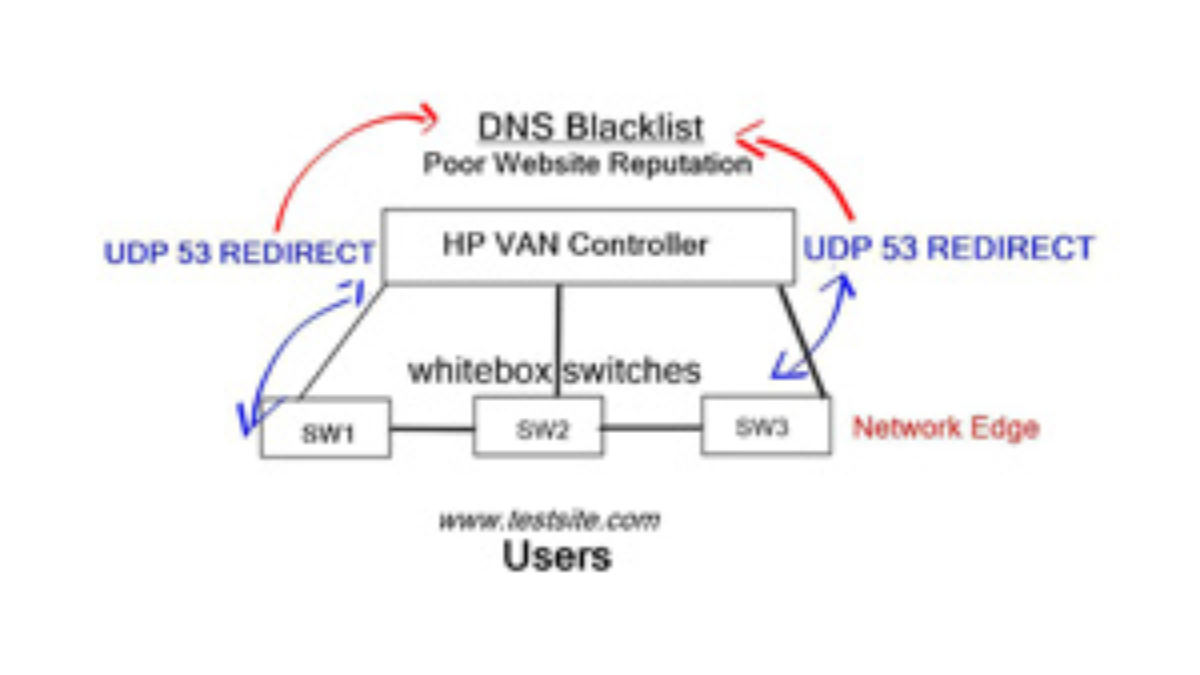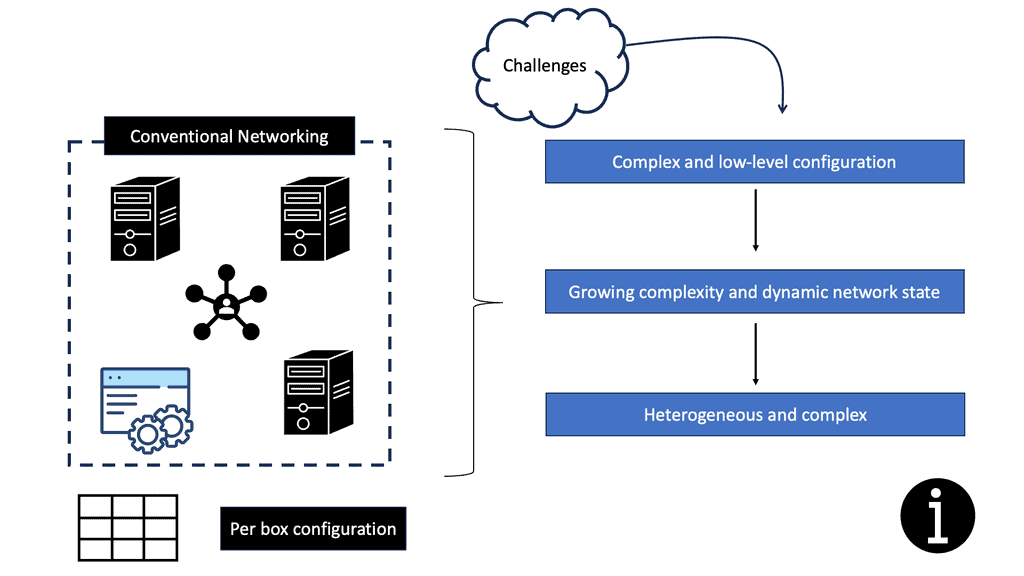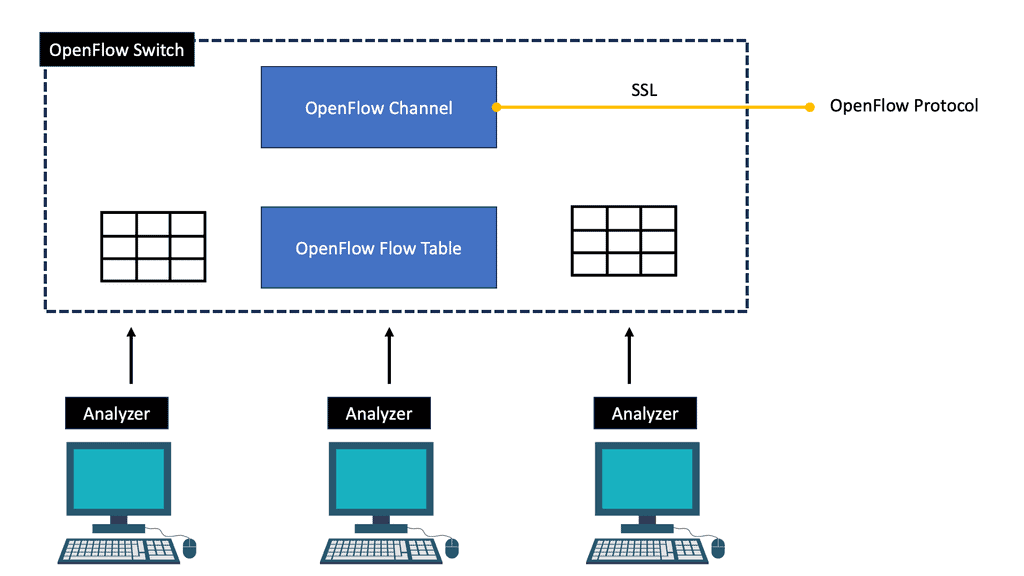HP SDN
In today's fast-paced digital world, efficient network management is crucial for organizations to stay competitive. Traditional network infrastructures often struggle to keep up with the increasing demands of modern applications and services. Enter the HP SDN Controller, a revolutionary solution transforming how networks are managed. In this blog post, we will delve into the world of the HP SDN Controller, exploring its features, benefits, and how it is reshaping the future of network management.
The HP SDN Controller is a software-defined networking (SDN) solution designed to simplify and automate network management. By decoupling the network control plane from the underlying infrastructure, the SDN Controller empowers organizations to manage and control their networks centrally, making it easier to deploy, scale, and adapt to changing business needs.
HP SDN, short for Software-Defined Networking, is a cutting-edge approach to network architecture that separates the control plane from the data plane, allowing for more flexible and programmable network management. By decoupling these two components, HP SDN enables administrators to centrally control and manage network resources, resulting in enhanced agility, scalability, and efficiency.
HP SDN boasts a range of powerful features that set it apart from traditional networking solutions. One of its key features is the OpenFlow protocol, which enables seamless communication between the control and data planes. This facilitates dynamic network configuration, traffic engineering, and the implementation of advanced network services.
Another notable feature of HP SDN is its centralized management platform, which provides a single pane of glass for network administrators to monitor and control various network devices. This simplifies network troubleshooting, reduces the likelihood of human errors, and ensures better resource utilization.
The adoption of HP SDN brings forth a multitude of benefits for organizations across various industries. Firstly, it enhances network agility by allowing administrators to rapidly provision and configure network resources in response to changing demands. This agility enables businesses to adapt quickly to evolving market needs and stay ahead of the competition.
Secondly, HP SDN facilitates network scalability by providing a more efficient and flexible approach to network provisioning. With the ability to dynamically allocate resources, organizations can easily scale their networks to accommodate growing workloads, without the need for costly hardware upgrades.
Furthermore, HP SDN improves network security by providing granular control over network access and traffic flow. Administrators can implement robust security policies and segment their networks to isolate critical assets, mitigating the risk of unauthorized access and potential security breaches.
The real-world applications of HP SDN are vast and diverse. From data centers and campus networks to telecommunications and cloud service providers, HP SDN is revolutionizing network management across industries. Its ability to optimize network performance, improve resource utilization, and simplify network operations makes it an invaluable tool for organizations of all sizes.
In conclusion, HP SDN is a game-changing technology that empowers businesses to unlock the full potential of their network infrastructure. By providing centralized control, enhanced agility, scalability, and improved security, HP SDN paves the way for a more efficient and future-ready network ecosystem. Embracing the power of HP SDN is not just a choice; it is a strategic move towards network excellence.
Matt Conran
Highlights: HP SDN
What is SDN, and what is its role?
SDN, on the other hand, is an open architecture proposed by the Open Networking Foundation (ONF) to address current networking challenges. It facilitates configuration automation and, even better, full network programming. Compared to the conventional distributed network architecture, which bundles software and hardware into closed and vertically integrated network devices, SDN architecture elevates the level of abstraction by separating the network data plane and control plane.
By doing so, network devices become simple forwarding switches; all the control logic is centralized in software controllers, enabling the development of specialized applications and the deployment of new services.
SDN Benefits
It is believed that such aspects of SDN simplify and improve network management by allowing innovation, customizing behaviors, and controlling the network according to high-level policies expressed as centralized programs. In this way, the complexity of low-level network details is bypassed, and the fundamental architectural problems are overcome. Through SDN’s southbound interface abstraction, SDN can also easily handle the underlying infrastructure’s heterogeneity.
Application SDN
This post discusses the HP SDN Controller and its approach to HP OpenFlow based on the OpenFlow protocol. These enable an exciting approach to SDN application. Provisioning network services for an application takes too long. As a result, the network lacks agility, and making changes is still a manual process.
Usually, when an application is rolled out, you must reconfigure every device with a command CLI interface. This type of manual configuration cannot accommodate today’s application requirements. Furthermore, static rollout frameworks prohibit dynamic changes to the network, blocking the full potential that applications can bring to the business.
Remove Rigidity
Software-defined networking (SDN) aims to take rigidity out of networks and give you the visibility to make real-time changes and responses. The HP SDN Application Suite changes how the network responds to business needs by programming the network differently. The following post discusses the HP SDN controller and how it works with HP OpenFlow, where HP operates the best part of OpenFlow and uses it with traditional routing and switching. I will also provide an example of an application SDN, such as a network protector and network optimizer.
Before you proceed, you may find the following helpful post for pre-information:
- SDN Traffic Optimizations
- What Is OpenFlow
- BGP SDN
- What Does SDN Mean
- SDN Adoption Report
- WAN SDN
- Hyperscale Networking
SDN Controller Key HP SDN Controller Discussion Points: |
|
Back to basics with SDN
Software-defined networking (SDN) is the decoupling of network control from networking devices that are used to forward the traffic. The network control functionality, also known as the control plane, is decoupled from the data forwarding functionality (also known as the data plane). Furthermore, the split control is programmable by exposing several APIs. The migration of control logic, which used to be tightly integrated into networking devices into logically centralized controllers, enables the underlying networking infrastructure to be abstracted from an application’s point of view.
Key Features of HP SDN Controller:
Centralized Management: The SDN Controller provides a centralized platform for managing and configuring network devices, eliminating the need for manual configurations on individual switches or routers. This streamlined approach improves efficiency and reduces the risk of human errors.
Programmable Network: With the HP SDN Controller, network administrators can program and control the behavior of the network through open APIs. This programmability enables organizations to tailor their network infrastructure to meet specific requirements, such as optimizing performance, enhancing security, or helping new services.
Network Virtualization: Virtualizing the network infrastructure allows organizations to create multiple virtual networks on a shared physical infrastructure. The SDN Controller enables network virtualization, providing isolation and segmentation of traffic, improving network scalability, and simplifying network management.
Traffic Engineering and Performance Optimization: HP SDN Controller enables dynamic traffic engineering, allowing administrators to intelligently route traffic based on real-time conditions. This capability improves network performance, reduces congestion, and enhances user experience.
Benefits of HP SDN Controller:
Improved Network Agility: The SDN Controller enables organizations to respond quickly to changing business needs, allowing for a more agile and flexible network infrastructure. It simplifies the deployment of new applications and services, reduces time-to-market, and enhances the organization’s ability to innovate.
Enhanced Security: The SDN Controller’s centralized control and programmability allow organizations to implement security policies and access control measures more effectively. It enables granular control and visibility, empowering administrators to monitor and secure the network infrastructure against potential threats.
Cost Savings: By automating network management tasks and optimizing resource allocation, the HP SDN Controller helps organizations reduce operational costs. It eliminates the need for manual configurations on individual devices, reduces human errors, and improves overall network efficiency.
Scalability and Flexibility: The SDN Controller allows organizations to scale their network infrastructure as their business snowballs. It supports integrating new devices, services, and technologies without disrupting the existing network, ensuring flexibility and future infrastructure-proofing.
Real-World Applications of HP SDN Controller:
Data Centers: HP SDN Controller facilitates the management and orchestration of network resources in data centers, enabling organizations to allocate resources efficiently, optimize workload distribution, and enhance overall performance.
Campus Networks: By centralizing network management, the SDN Controller simplifies the configuration and deployment of services across campus networks. It allows for seamless integration of wired and wireless networks, improves scalability, and enhances user experience.
Service Providers: HP SDN Controller empowers providers to deliver agile and scalable customer services. It enables the creation of virtualized network functions and improves service provisioning, reducing time-to-market and enhancing service quality.
HP SDN
Hewlett Packard (HP) has taken a different approach to SDN. They do not want to recreate every wheel invented and roll out a blanket greenfield OpenFlow solution. Routing has worked for 40 years, so we cannot expect to see some revolutionary change to routing as it’s simply not there. Consider how complicated distributed systems are. Filing all Layer 2 and 3 protocols with OpenFlow is nearly impossible.
Layer 2 switches learn MAC addresses automatically, building a table that can selectively forward packets. So, why is there a need to replace how switches learn via Layer 2? The layer 2-learning mechanism works fine; no real driver can replace it. There are Potential drivers for Spanning Tree Protocol (STP) replacement as it is dangerous, but there is no reason to replace the layer 2-learning mechanism. So, why attempt this with OpenFlow?
HP OpenFlow
OpenFlow comes with its challenges. It derives from Stanford and is very academic. It’s hard to use and deploy in its pure form. HP adds to it and makes it more usable. They tune its implementation to match today’s network requirements using parts of OpenFlow, considering this to be HP OpenFlow and traditional routing. OpenFlow is generally not good, but certain narrow niche cases exist where it can be used. Campus networks are one of those niches, and HP is marketing its product set for this niche.
Their HP SDN controller product sets markets the network edge and leaves the core to what it does best. This allows an easy migration path by starting at the edge and moving gradually to the core ( if needed). This type of migration path keeps the potential blast radius to a minimum. An initial migration strategy that starts at the edge with SDN islands sounds appealing.
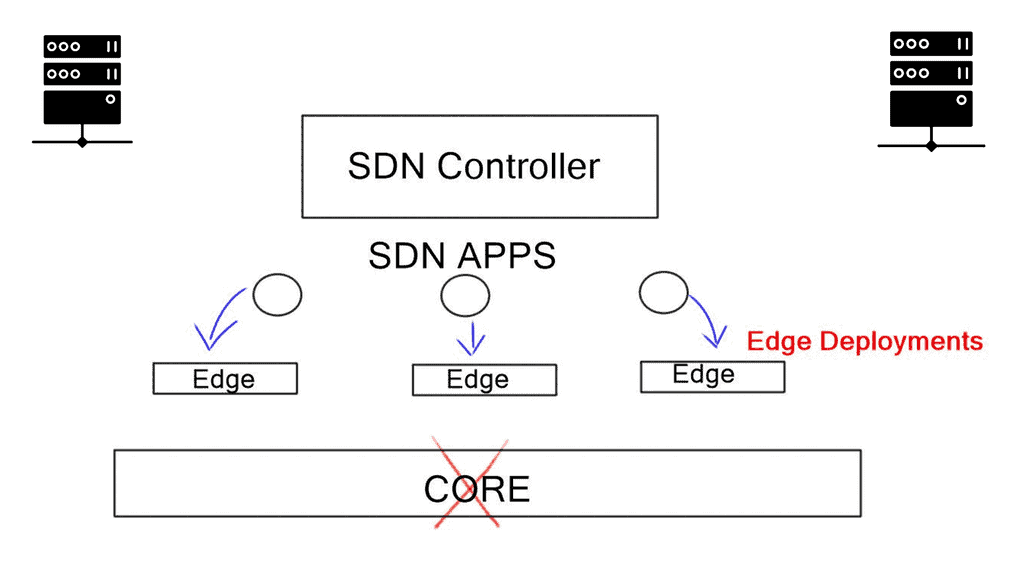
HP SDN: The SDN VAN controller
HP removed the North-South bottleneck communication. They are not sending anything to the controller. Any packets that miss an OpenFlow rule hit what is known as the last rule and are sent with standard packet processing via traditional methods.
The last rule, “Forward match all – forward normal,” reverts to the regular forwarding plane, and the network does what it’s always done. If no OpenFlow match exists, packets are forwarded via traditional means. They use a conventional distributed control plane so it can scale. Suppose you consider a controller that has to learn the topology and compute the best path through a topology.
In that case, controller-based “routing” is almost certainly more complex than distributed routing protocols. HP SDN design does not do this and combines the best from OpenFlow and Routing. OpenFlow rules take precedence over most of the control plane elements.
However, most Layer 2-control plane protocols are left to traditional methods. As a general rule, you keep time-critical things such as Link Aggregation Control Protocol (LACP) and Bidirectional Forwarding Detection (BFD) with conventional methods, and other controls that are not as time-critical can be done with OpenFlow.
- HP OpenFlow: HP uses Openflow to glean and not modify the forwarding plane.
The controller can work in several modes. The first is the hybrid model, which forwards with OpenFlow rules. If all OpenFlow rules are not matched, it will fall back to standard processing. The second mode is Discovery. This is where the local SDN switches send copies of ARP and DHCP packets to the controller. By analyzing this information, the controller knows where all the hosts are and can build a network topology map. A centralized view of the network topology is a significant benefit to SDN.
They also use BBDP, which is similar to LLDP. It uses a broadcast domain and is not just link-level, enabling it to fly through OpenFlow-enabled switches. The controller does not directly influence forwarding; it scans the topology by listening to endpoint discovery information. The controller now contains a topology view, but there is no intercepting or redirecting traffic. Instead, it provides endpoint visibility across the network.
HP has started to integrate its SDN controller with Microsoft Active Directory. This gives the controller a different layer of visibility, not just IP and Subnet-based. It now gives you a higher-level language to control your network. It is making decisions based on users and groups, not subnets.
Application SDN: Network Protector
Malware and Spyware cause many issues, and the HP Protector product can help with these challenges. It enables real-time assessment and security across all SDN devices. The application SDN pushes down one rule—UDP 53 redirects to the controller. It intercepts UDP 53 and can push down ACL rules to block certain types of traffic.
They extract DNS traffic on the network’s edge and pass it to the controller. Application features rank the reputation of an external site and determine how likely you will get something nasty if you go to that site. Additional hit count capability lets the network admin track who requests what. For example, if a host requests 3000 DNS requests per second, it is considered an infected host and quarantined by sending down additional OpenFlow rules.
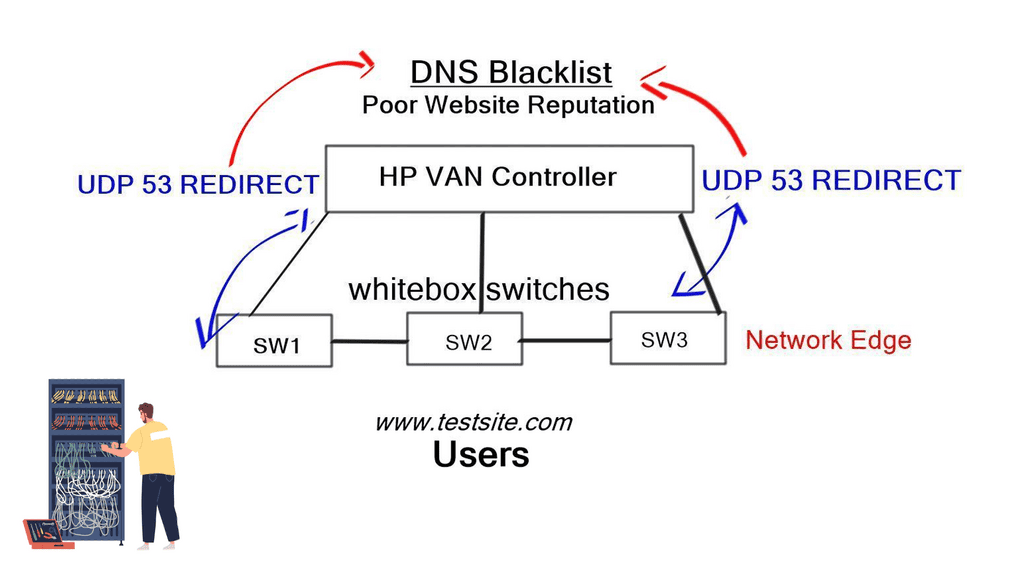
Application SDN and Network visualizer
An SDN application for network admins assists in troubleshooting by defining where traffic is and where it is going. The network admin can select traffic, make copies, and send it to a location. This is similar to tapping, except it is quicker and easier to roll out. Now, your network traffic is viewable on any port and switch. This app lets you go through the wire straight away.
As it is now integrated with Active Directory, when a user calls and says he has a network problem, you can extract his traffic by user ID and debug it remotely.
All you need is the User ID; in 30 seconds, you can see his packets. This is a level of visibility previously unavailable. HP gives you a level of network traffic detail incapable in the past. You could also grab ingress OSPF for analysis. This is not something you could do in the past. You can mirror LSAs and recreate the entire topology. You need access to one switch in the OSPF area.
Application SDN and Network optimizer
This application SDN is used for Microsoft LYNC and SKYPE for business. It provides automated provisioning of network policy and quality of service to endpoints. Lync and Microsoft created a diagnostic API called SDN API. This diagnostic API sends information about the calls, username, IP, and port number on both sides – ingress and egress.
It can reach the ingress switch on each side and remark the Differentiated Services Code Point (DSCP) for the ingress flows. This is how SDN applications should work. SDN implementations should be where the application requests service from the network, and the network responds. We were at Layer 4 with ACL and QoS, not the Layer 7 application. Now, with HP Network Optimizer, the application can notify the network, and the network can respond.
The HP SDN suite is about adding value to the network’s edge. Where do you allow the dynamic value of SDN to give value up to customers’ risk appetite? Keeping the dynamic SDN to the edge while keeping the core static is a significant value of SDN and an excellent migration strategy. The SDN concept takes information otherwise out of the network to the network.
Summary: HP SDN
The need for flexible and scalable networks has become paramount in today’s rapidly evolving technological landscape. Enter HP SDN (Software-Defined Networking), a revolutionary approach that transforms traditional networking by separating the control and data planes. In this blog post, we delved into the world of HP SDN, exploring its key concepts, benefits, and real-world applications.
Understanding HP SDN
HP SDN is a groundbreaking paradigm shift in networking architecture. It enables network administrators to manage and control network behavior centrally using software applications. SDN empowers organizations to build dynamic, programmable, and agile networks by decoupling the control plane from the underlying hardware.
Key Components of HP SDN
To comprehend the workings of HP SDN, it is essential to grasp its key components. The SDN Controller acts as the brain of the network, orchestrating and directing network traffic. It communicates with SDN switches that forward packets based on the instructions received from the controller. OpenFlow, a vital protocol, facilitates communication between the controller and switches, ensuring seamless interoperability.
Benefits of HP SDN
The benefits of HP SDN are manifold. Firstly, it offers enhanced network agility, allowing administrators to adapt to changing business requirements swiftly. Secondly, SDN simplifies network management, reducing operational complexities. Moreover, by centralizing control, SDN enables intelligent traffic engineering, improving network performance and efficiency. Lastly, HP SDN promotes innovation and accelerates the deployment of new services, driving business growth.
Real-World Applications
HP SDN has found its applications across various industries. SDN enables dynamic resource allocation in data centers, optimizes workload distribution, and improves overall efficiency. SDN facilitates secure and scalable network connectivity for students and faculty in the education sector. Furthermore, SDN plays a crucial role in service provider networks, enabling the rapid provisioning of new services and enhancing service quality.
Conclusion:
In conclusion, HP SDN represents a paradigm shift in networking, revolutionizing how we design, manage, and operate networks. Its ability to centralize control, enhance agility, and drive innovation makes it a game-changer in the industry. As organizations strive for flexible and scalable networks, HP SDN emerges as a powerful solution that paves the way for future networks.

